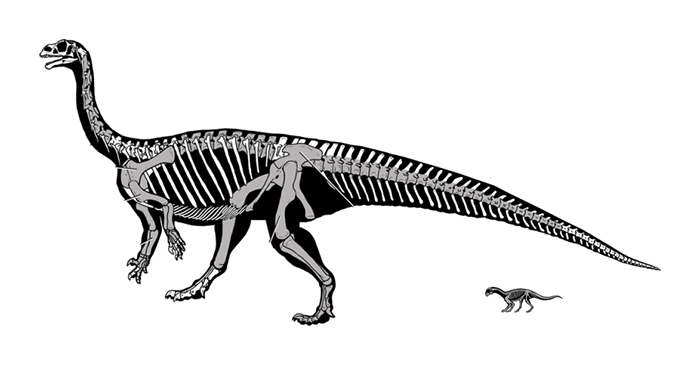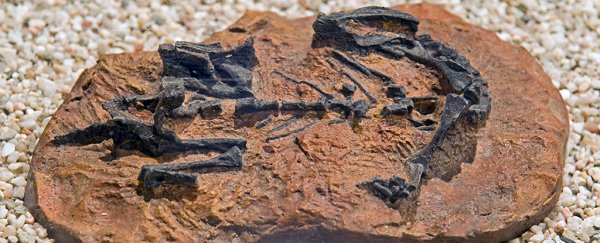Strange as it might seem, learning to crawl before learning to walk is actually a very unusual trait among animals. Aside from humans, only a few kinds of dinosaurs are thought to have crawled like this, and scientists just identified another candidate.
The dinosaur in question is a sauropod named Mussaurus patagonicus ("mouse lizard"), which lived about 200 million years ago in what is now Argentina. Dramatic growth in the first few years of its life would have led to a shift in how it moved its body around, new research suggests.
The findings are based on 3D reconstructions made from fossils depicting three key stages of the dinosaur's life – hatchling, one year old, and adult – which enabled the researchers to work out where its centre of body mass would have been across its life.
 (Otero et. al, Scientific Reports, 2019)
(Otero et. al, Scientific Reports, 2019)
"We have struggled to find any other animals aside from humans that go through that transition," University of London palaeontologist Andrew Cuff told Science News. "Finding it in the fossil record is pretty exceptional."
A baby M. patagonicus would fit inside the palm of your hand and weigh about 60 grams (2.1 ounces). At this stage, the scientists say the animal would have a relatively large head and neck, and well-developed forearms, which it would use to get around on all fours.
As it increased in size and grew a longer tail, the dinosaur's centre of gravity would have shifted to the pelvic region, enabling it to stand up on two legs, according to the researchers.
At the stage of being a grown adult, M. patagonicus would have been around six metres (nearly 20 feet) long and weighing above 1,000 kilograms (over 2,200 pounds).
"We don't know if this pattern applied to all sauropods," lead researcher and palaeontologist Alejandro Otero from the La Plata Museum in Argentina told National Geographic.
"But the fact that this [group of animals] shifted their movements in a way so similar to humans is fascinating."
Having access to fossils covering so much of a dinosaur's life is rare – it took 50 years to assemble the M. patagonicus set – and so it's proved difficult to work out just how many dinos were crawling before they were walking. Finding hatchling or juvenile fossils is rare, because of their small size.
The researchers also say their models suggest that tail and neck length is most important when it comes to figuring out whether dinosaurs walked upright – perhaps more important than the balance between hindlimb and forelimb length, which experts have used as a guide before now.
Most long-necked sauropods like this never got to the walking upright stage, and would lumber around on all fours all their lives to support their bulk. Some of the exceptions are thought to be Maiasaura, Iguanodon, Psittacosaurus, Dryosaurus, and Massospondylus.
Thanks to the extensive fossil record we now have for M. patagonicus, and the 50 years it took to collect it, we're a lot closer to understanding how it got around.
"There are few dinosaurs for which we have a good series from eggs or babies to adults, and Mussaurus has become one of those, which opens up some exciting new questions not feasible 20 years ago," one of the team, John Hutchinson from the University of London, told National Geographic.
The research has been published in Scientific Reports.
